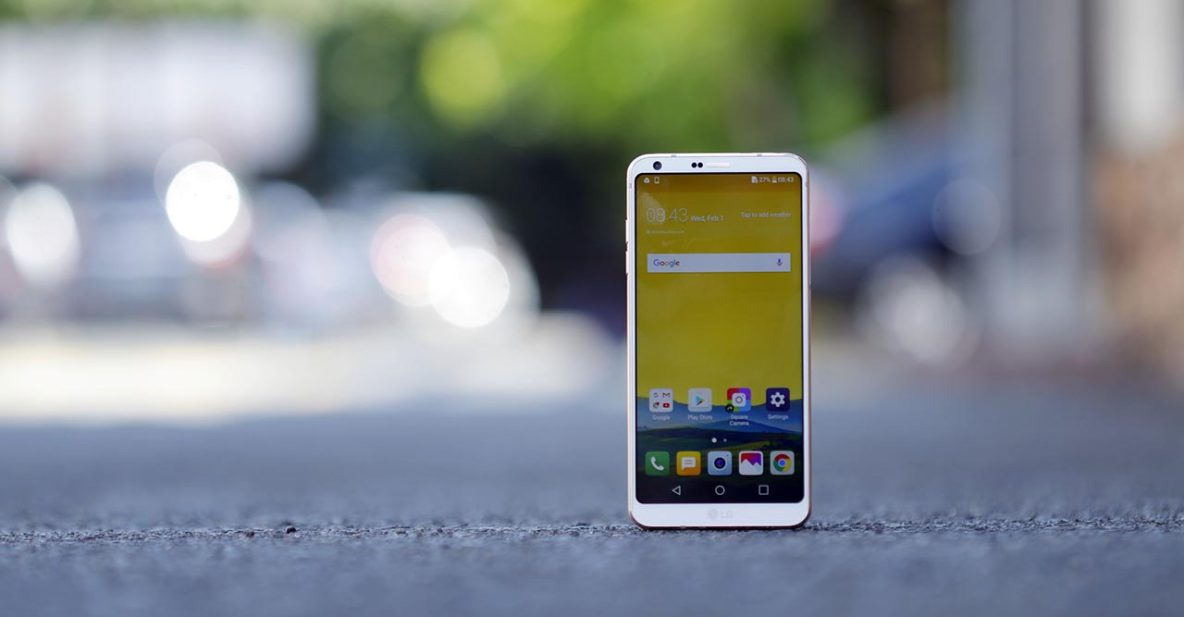But it’s 2017. Which means there’s a new Android flagship from the Korean electronics giant. And no other phone today seems to want to defy the past and look to the present (and immediate future) more than the LG G6 (click for complete specs).
It’s completely new, top to bottom. It looks nothing like its predecessor. Importantly, it drops the modular shtick in favor of a handsome glass-and-metal armor that doesn’t mind getting dunked in water and feels so well put together that we wonder why LG even decided to make the G5 the way it did.
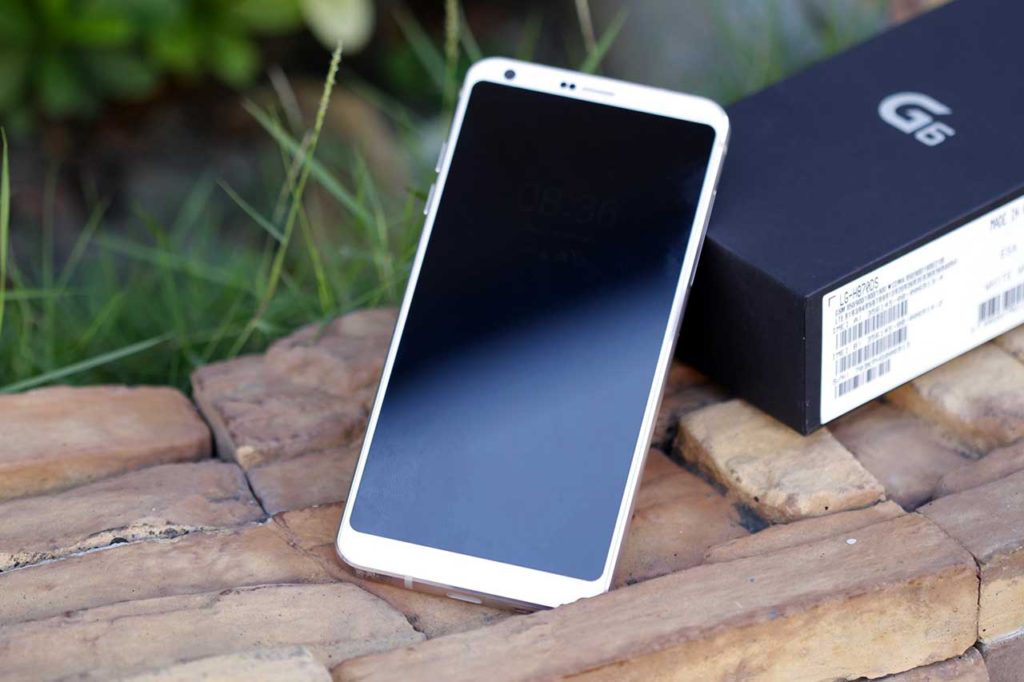
The LG G6 looks nothing like its predecessor. Importantly, it drops the modular shtick in favor of a handsome glass-and-metal armor that doesn’t mind getting dunked in water and feels so well put together.
That’s water under the bridge now, we suppose. With the G6, LG is hoping that it can either hang with the big names or beat them at the top of their game. A tall order given what Samsung has done with the Galaxy S8 and what Apple is likely to do with the next iPhone (which is to cram as much screen and as many dandy parts as possible by declaring an all-out war on bezels and physical navigation buttons).
But you know what? The LG G6 has a real chance of upsetting the competition this year — perhaps more so than ever before. Provided one isn’t too fussy about benchmark numbers, of course.
SEE ALSO: Samsung Galaxy S8, Samsung Galaxy S8+, LG G6, Huawei P10, or Huawei P10 Plus?
By heading back to more grounded territory and building on what worked well with the previous model, the company has crafted a genuine contender that’s worth a long, hard look from anyone looking for an upscale upgrade.
Any discussion involving the G6 should begin with design — specifically, how LG managed to fit a large 5.7-inch display into a smaller area, smaller than the area a big phone like, say, the Apple iPhone 7 Plus would occupy.
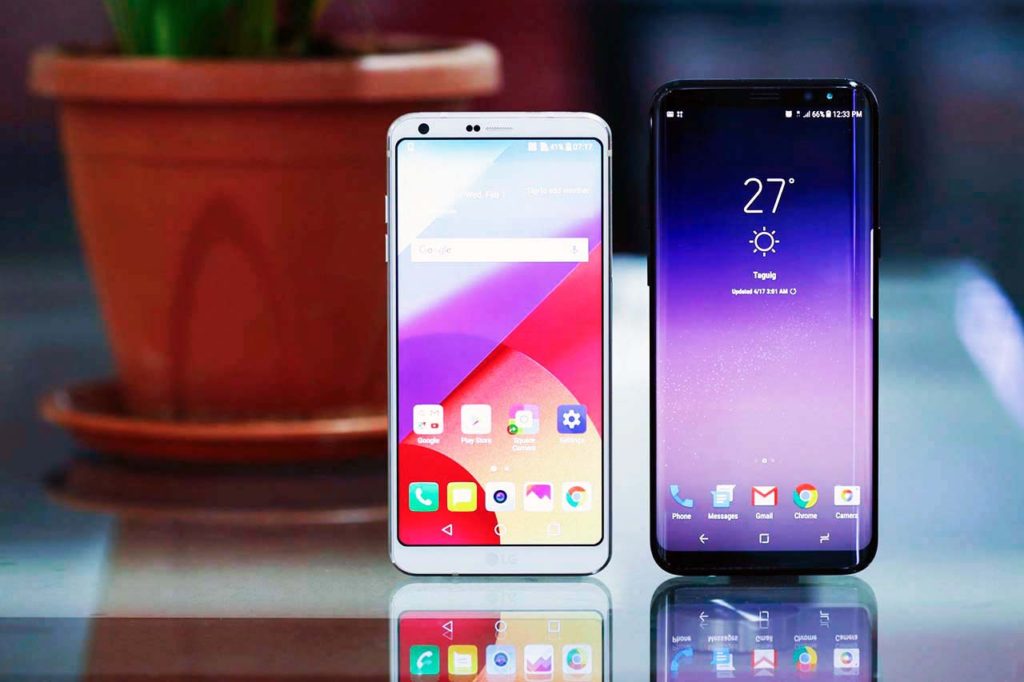
LG has managed to fit a large 5.7-inch display into a smaller area — smaller than the area a big phone would occupy. To put things into perspective, check out the LG G6 with the Samsung Galaxy S8 — S8+, to be specific.
Okay, past G-series entries have always been economic with their use of space, but no other LG has ever been this judicious. That matters, because you’re essentially getting a large-sized screen in a medium-sized bod that you wouldn’t mind having in your jeans pocket all day.
Those bezels are about as thin as they get, leaving little room for anything else besides what is customary: front-facing camera on top, right beside the earpiece; logo at the bottom below the on-screen buttons, which, per usual for an LG release, can be rearranged or swapped out with a few taps in the settings menu.
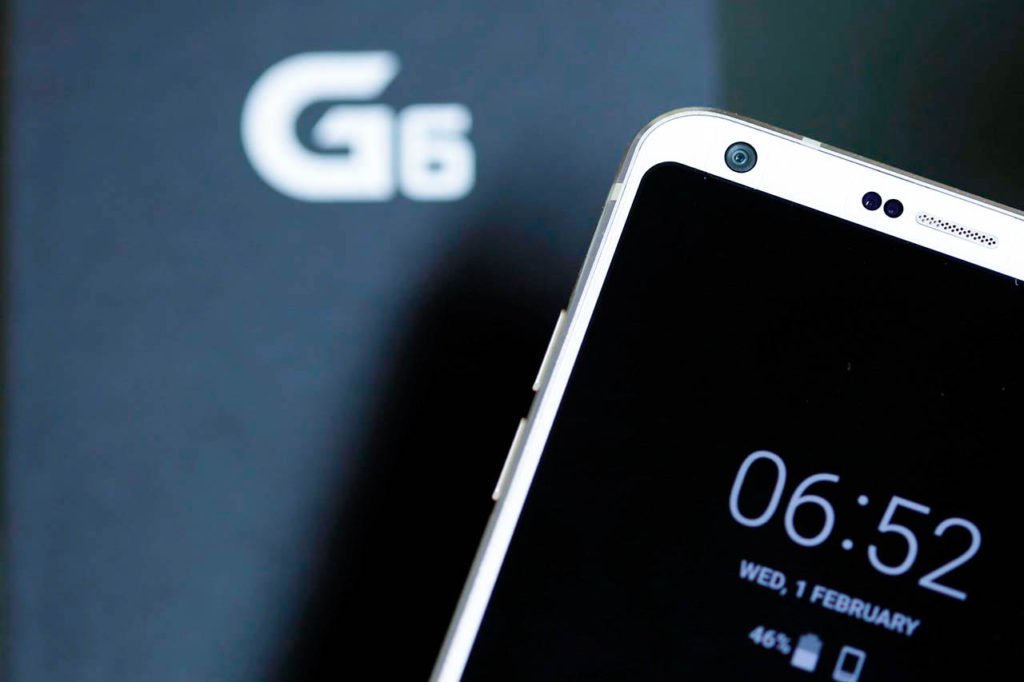
Those bezels are about as thin as they get, leaving little room for anything else besides what is customary.
The screen is flush with the metal frame, something you may find unattractive, especially on a high-end handset. Personally, we wouldn’t describe it as arguable, though the absence of rounded glass — the kind you’ll find on most handsets, even on cheap ones — is admittedly surprising.
The curved corners of the display, we don’t like very much — or maybe we’re not just used to seeing them yet. But they’re there to (hopefully) keep the screen from breaking if the LG G6 takes a tumble, or at least that’s what we are thinking.
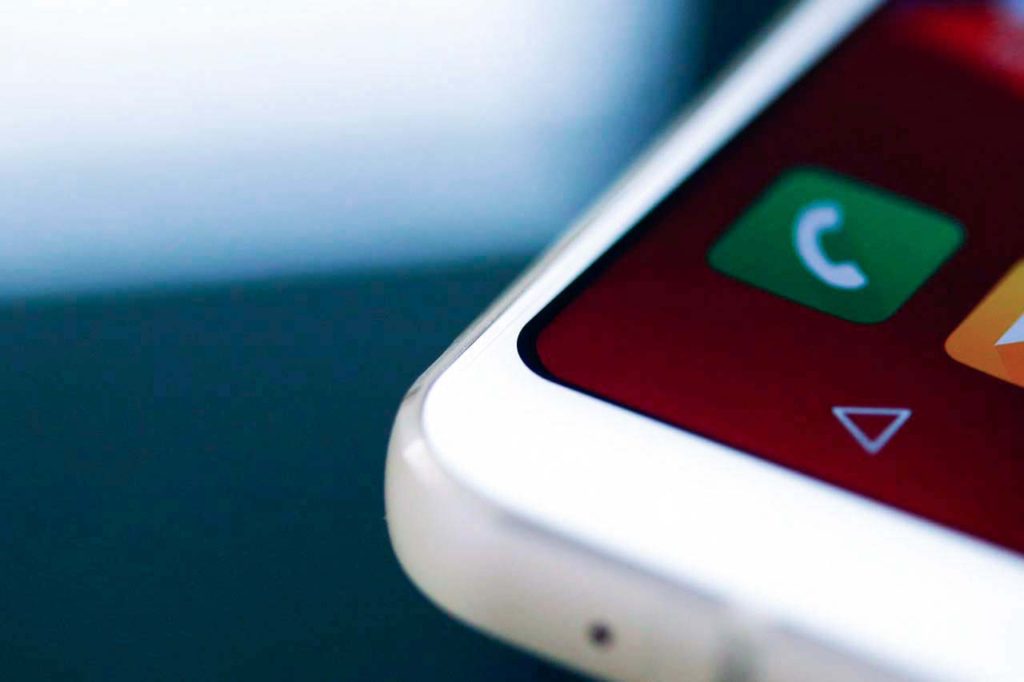
The LG G6’s curved corners of the display, we don’t like very much — or maybe we’re not just used to seeing them yet.
The 2,880 x 1,440 LCD panel is as good as it gets for now. Sufficiently bright for outdoor use; has absolutely splendid colors and contrast; and shows no discoloration or washing out at weird angles. It’s also got an always-on display option for showing the date, time, battery percentage, and important notifications.
The wide — and unusual — 18:9 aspect ratio helps you fit more content and allows for more flexibility than a standard 16:9 screen. You can, for example, preview the photos you took on one side of the screen while shooting in real-time, or even capture perfectly square photos for Instagram. Not everyone will find value in the added functionality, but we’d rather have them than not.
The new choice of aspect ratio makes the G6 appear unnecessarily tall, but not to the point that it can become a distraction. This is one of the best screens we’ve used recently, and we’ve seen a lot of great hardware in the past year, although we expected no less given LG’s pedigree in the TV industry.
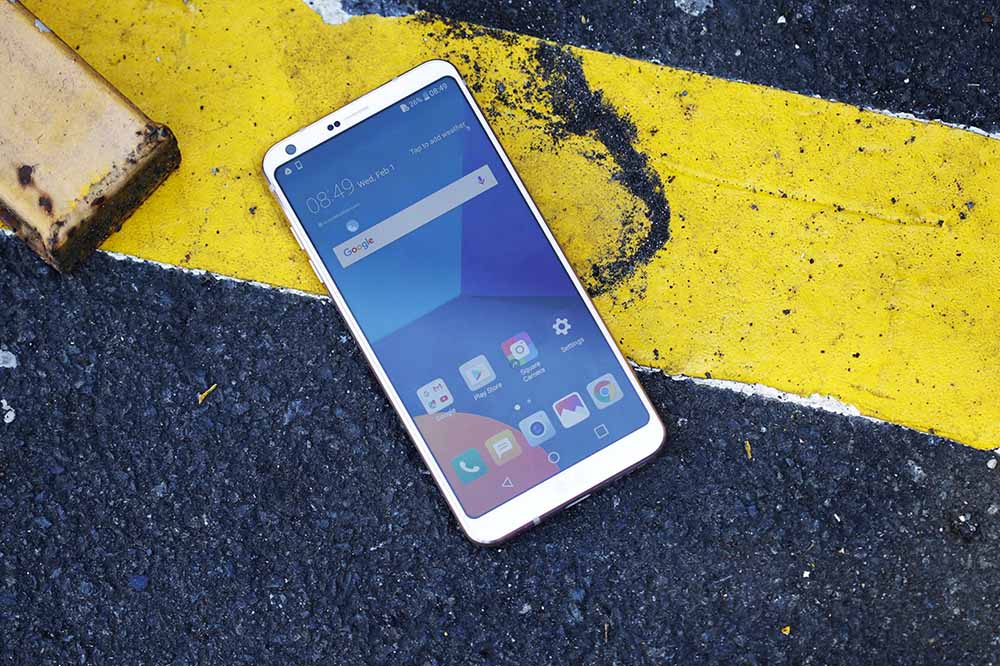
The wide — and unusual — 18:9 aspect ratio helps you fit more content and allows for more flexibility than a standard 16:9 screen.
The back is made of scratch-resistant Gorilla Glass 5 that bends toward the sides. The white unit we used didn’t pick up fingerprints and smudges too readily; unfortunately, we can’t say the same for other color variants (there’s a gray one and a black model, too).
Below the dual array sits the power button, which pulls double duty as the phone’s — you guessed it — fingerprint reader. It’s fast and accurate, and it’s always on so you don’t have to press it to unlock the LG G6 like you do on the iPhone. We have to say, though: It feels awkward to access the power button on the back because we’ve become so accustomed to having it on either side.
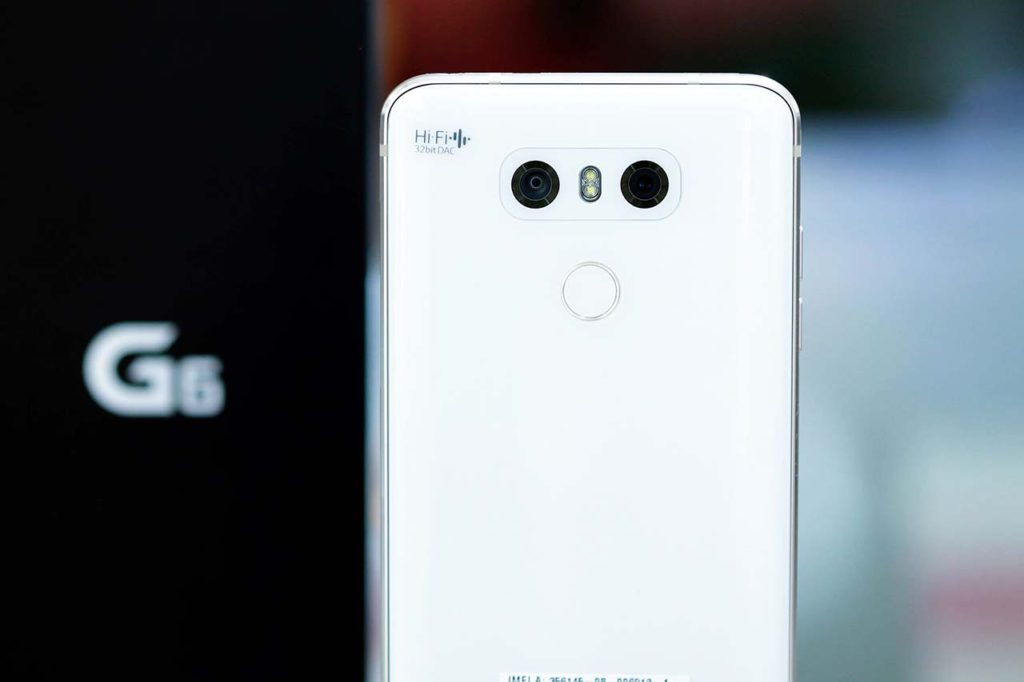
It feels awkward to access the power button on the back of the LG G6 because we’ve become so accustomed to having it on either side.
Another key feature is waterproofing. The G6, unlike any other phone produced by LG, received an IP68 rating, meaning it can survive being dropped in the pool or potty (!). It also means it is completely protected from dry and dusty environments. Better still, LG didn’t sacrifice the headphone jack on the top, or cork the Type-C port on the bottom, to make the phone more resistant to damage. Take that, Apple.
Has anything changed on the LG G6’s rear-camera setup? Yes and no. There are still two cameras round the back, both of the 13-megapixel variety this time around. Both use the same exact sensor as well: Sony’s IMX258. Compare that to 16 megapixels on the G5 and V20 for the primary shooter and 8 megapixels for the wide-angle one. Laser auto-focus, which makes focusing in the fore and backgrounds fast and accurate, is a no-show this year.
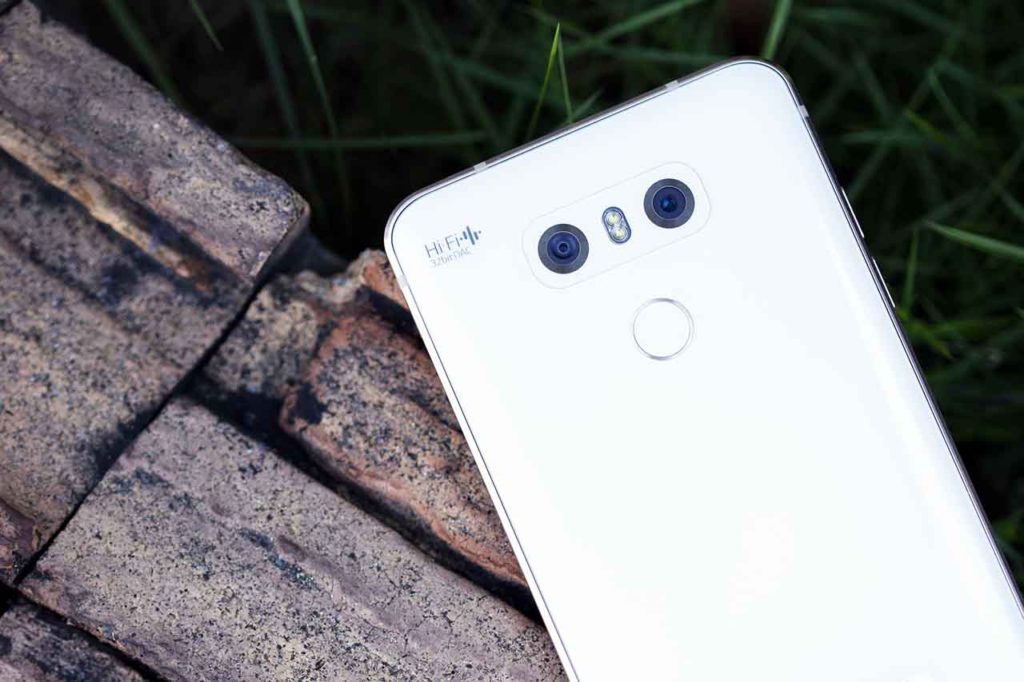
Has anything changed on the LG G6’s rear-camera setup? Yes and no.
There’s a change in coverage, too, with the standard and wide-angle cams seeing their field of view reduced a wee bit. Not a problem; the wide-angle shooting mode, though lacking optical image stabilization for superior shots in low light, remains as useful as ever.

Resized sample wide-angle photo taken with the LG G6
The results are generally excellent — crisp and detailed images in daylight, decent outputs in dimmer areas. Colors are rich and deep without being too aggressive with contrast and saturation. Even the dynamic range is better than on most phones we’ve tried.
The front-facer is listed as a 5-megapixel unit, but it can take wide-angle shots with an expanded, 100-degree field of view, so you won’t have to bring a selfie stick for large group shots. Impressively, it does so without requiring a secondary sensor. Our selfies turned out okay for the most part — nothing special.
[sciba leftsrc=”https://www.revu.com.ph/wp-content/uploads/2017/04/LG-G6-sample-selfie.jpg” leftlabel=”LG G6″ rightsrc=”https://www.revu.com.ph/wp-content/uploads/2017/04/Samsung-Galaxy-S8-Plus-sample-selfie.jpg” rightlabel=”Samsung Galaxy S8+” mode=”horizontal” width=””]Our selfies turned out okay for the most part. Here is a resized sample selfie taken with the LG G6. We placed it beside one that was captured with the Samsung Galaxy S8+ for comparison.
A Qualcomm Snapdragon 821 system-on-a-chip from last year is used under the hood, working alongside 4GB of RAM, up to 64GB of expandable storage, and Android Nougat. That said, the G6 should run fine even without a cutting-edge chipset. Based from experience, that is actually the case. Really.
Launching apps and switching from one task to another happens almost instantaneously. Doing virtually anything else is peppy. Of course, there are speedier and (possibly) more efficient options out there — but let’s not pretend the 821 is anything like a deal-breaker.
The LG G6 should run fine even without the Snapdragon 835. Based from experience, that is actually the case. Of course, there are speedier options out there — but let’s not pretend the 821 is anything like a deal-breaker.
By most accounts, LG is off to a strong start. It has brought its A-game with the G6, which drops the fanciness in favor of a more simplistic experience that works well out of the box. This is definitely the most exciting G-series handset in years, and you’d be missing out if you completely ignore it.
In the Philippines, the LG G6 is now available for preorder until April 30 for P37,990 or approximately $765 off contract.
Share this Post


